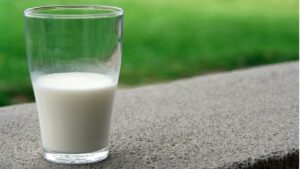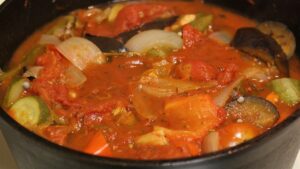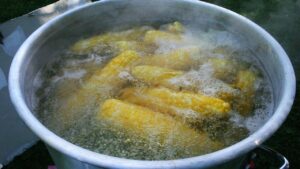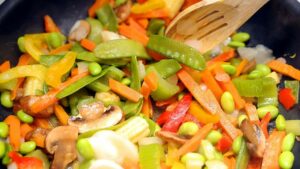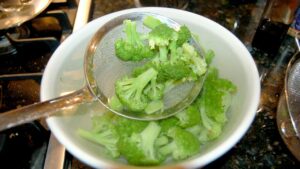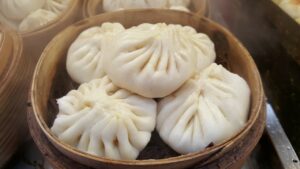What is Poaching?
Poaching is a cooking technique that involves cooking delicate foods such as eggs, fish, poultry, and fruit in a liquid that is heated to a temperature ranging from 158–176 °F (70–80 °C).
The food is typically submerged in a liquid such as wine, stock, milk, or water. During the poaching process, the liquid is kept at a temperature just below boiling point, allowing the food to cook slowly and evenly.
This method of cooking is considered to be one of the healthiest as it doesn’t require any added fat, and it results in tender and flavorful food.
Key Takeaways
- Poaching involves a moist heat cooking technique to gently cook the food.
- It retains the food value and the flavours
- This is a stress free, oil free cooking process
- This cooking should be done very carefully before reaching the ultimate temperature.
Understanding Poaching
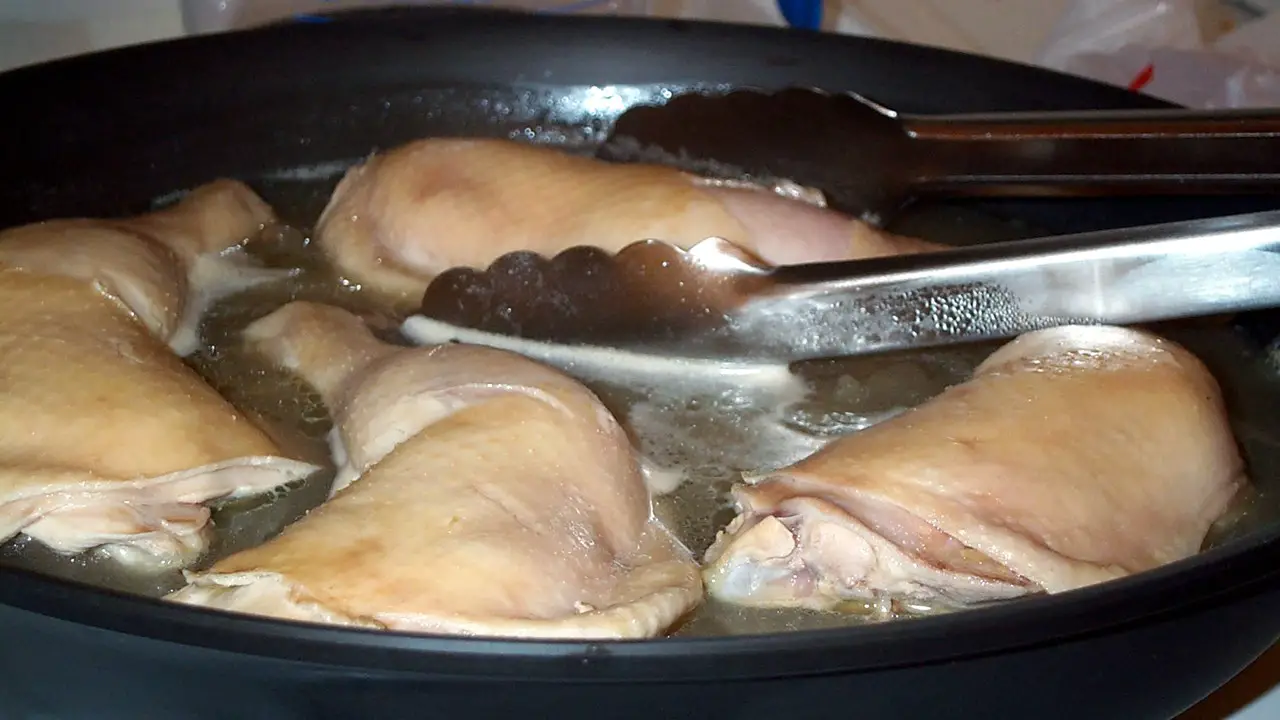
To understand poaching you need to be clear about one thing – poaching is not boiling. The process involves gentleness where the liquid just needs to be hot as it can shiver the surface of it. There is a French word called “frisson” for liquid.
If we dig down the history of the origin of poaching, it all started with eggs and boiling water.
Poaching originates from the Fresh word “poché” which signifies pocket or pouch. This is a historic cooking technique that is being used to cook nut custards and dumplings.
There was a cooking book called Le vivandier, where you can get a mention of this technique. With time and culinary expertise, these techniques get into a more modern shape.
By 1652, different recipes came into the limelight followed up by poached eggs and other dishes.
Poaching is a useful technique used over delicate foods like fish, eggs, poultry, etc. the food here is not so presentable as it is tossed or twisted.
Thus, the visual interest could be low compared to other mediums of techniques. Though in the case of fish or chicken, you can roast it at first and then poach it to make it appealing.
Poached eggs are the perfect example of this technique whereas other items needed sauces and other associated foods to enlighten up the dish.
When you are knowing about poaching then you must learn more about poaching liquid. It can be plain water, wine, broth, or even oil.
Lemon or any kind of acid is added to the liquid so that the fat gets settled. Some of the overachieving poachers also add carrots and celery onion to the liquid.
To garnish you can add herbs, peppercorns, garlic, etc. For fruits, cinnamon, and cloves are added as flavors.
Importance of Poaching
Poaching is important to the heart, mind, and body of real food lovers. Let us check the importance of poaching foods.
Stress-free Cooking
With this cooking technique, you don’t have to worry about taste, spices, and even the ingredients.
The only thing you need to check here is the temperature and other than that all are done without any hassle.
Environmentally Friendly
No synthetic products are being used in this poaching technique. Just pure food like eggs, fish, poultry, and food are being poached here.
There is no usage of any unnecessary fat or other products.
Nutritious and Healthy
In poaching the biggest advantage is the retention of nutrients completely.
As the submerged technique is being applied to prepare the food thus the nutritional aspect is kept intact.
It breaks down the connective tissue which makes the meat tender. The food gets easily digested.
Very Easy to Cook
For pouching only a liquid base is used and you just have to take care that the temperature used in this technique varies from 158–176 °F that is about 70–80 °C.
With incredibly less effort the whole preparation is being done.
Cooks Quickly
As soon as the liquid gets to the temperature of poaching the food is cooked and you just need to serve it.
Thus it generally takes a few minutes to be completely done which is very less compared to any other techniques.
Versatile Possibilities
You can get versatile possibilities when you are thinking about poaching.
Foods like shellfish and salmon can come out with a great exciting taste after cooking.
What Are Three Methods of Poaching?
There are three methods of poaching: Par-poaching, submersion poaching, and shallow poaching.
These three poaching methods involve light and gentle cooking techniques with food like fruits, eggs, poultry, chicken, fish, etc.
The twist here is to keep the liquid below the boiling point.
Par- Poaching
It involves a submersion procedure where the ingredients are cooked half and removed from the heat and then it is kept for poaching.
There would be no resistance as the test for doneness is only checked with the tip of the knife.
Shallow Poaching
Here also the partial submersion technique is applied where after the food is poached, the liquid is reduced to prepare the sauce called “cuisson.”
Before adding the cold poaching liquid, we have to coat the pan with butter before cooking.
If you prefer to cook with your lid on then the dish will be evenly done at the end.
Submersion Poaching
The submersion process needs liquid to submerge all the ingredients and sometimes for bobbing parchment paper is used.
It is better to keep the room in the pot to let the liquid expand.
Tips to Make Poaching Better
Know Your Liquid (Quality & Quantity)
The quantity and quality of the liquid will depend on how much food you are poaching or what type of food you are using, even the technique also depends.
Pot Size
You must check out the pot size, as it should be large enough to hold the food along with the water. Without overcrowding or overflowing the liquid you need to cook it.
No Boiling
“Never boil”, you should never boil but at the same time, you must cook the food before reaching a boiling point. Remember the liquid should cover the food entirely.
Minimal Movement on the Surface
You should not make any sort of movement on the surface, not even bobbing of the water is allowed here. So you need to visually understand the doneness of the food.
You Can Use a Thermometer
If you are an overachieving perfectionist then you can use a thermometer to check the temperature between 158–176 °F. That means no boiling lower than simmering.
Parchment Covering
You can simply cover the food by forming a lid of parchment paper that is cut to the size and dimension of the whole cooking pot. It simply bars the food from getting exposed to the air and also helps it to cook submerged.
Uses of Poaching in Indian Cuisine
Tracing of foreign cooking techniques and styles is often seen in Indian kitchens.
Poached eggs or “Dimer Poach” is an ideal breakfast even in India. In fact to be honest some people are looking for this item even during other times of food timing like even in the side courses of lunch and dinner.
Questions & Answers:
What Foods Are Cooked by Poaching?
Poaching is a gentle slow cooking method where food like delicate foods like eggs, fish, poultry, fruit, etc are being used. The twist is to cook below the boiling point.
What is the Poaching Temperature?
The temperature used in the poaching technique varies from 158–176 °F which is about 70–80 °C. This is used over delicate foods like eggs, fish, poultry, fruit, etc. It must not reach the boiling point.
Conclusion
Poaching is a unique technique where the utmost nutrition of the food is kept intact and the flavors also get reserved.
It is stress-free and healthy cooking but to make the perfect poach you need to learn to check the temperature.

